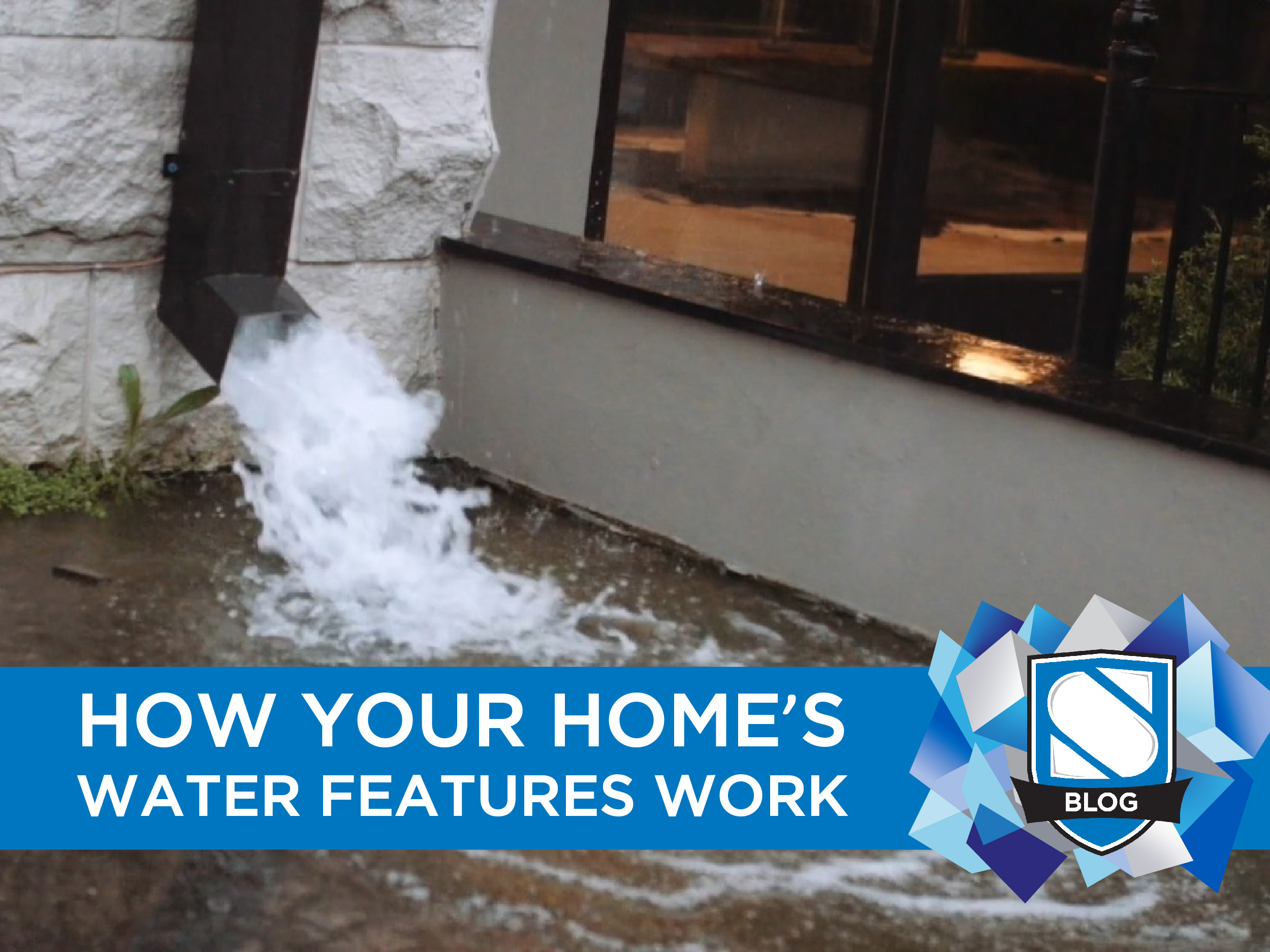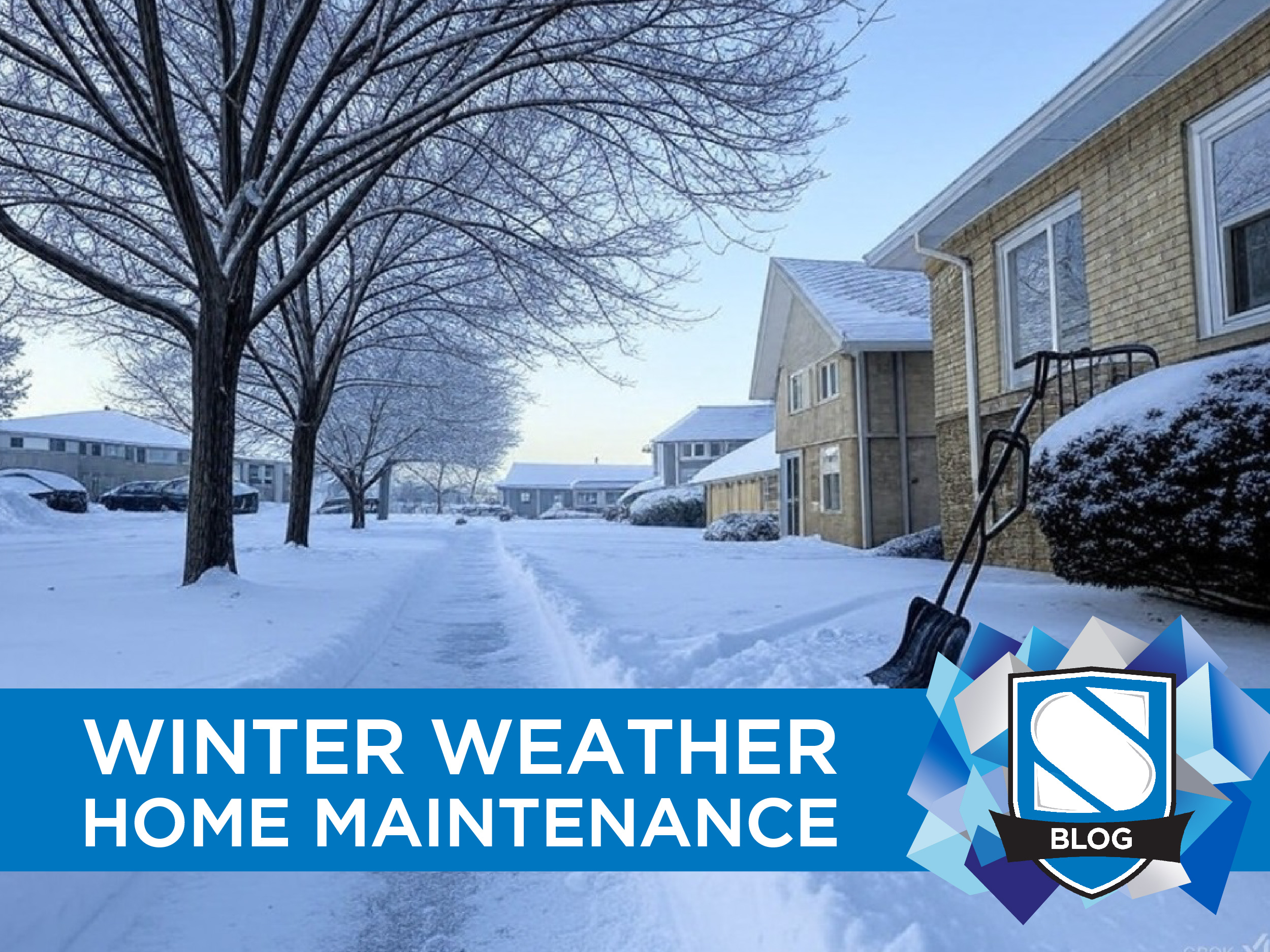Whether you’re a first-time homeowner or a seasoned pro around your property, it’s important to keep in mind how things work both in and around the house.
With the spring “water season” beginning, we’ve put together a quick homeowner’s crash course on a few key systems: the sump pump, backwater valve, and water shut-off valve. These devices help keep your home safe from potential water damage, but they’re often ignored until something goes wrong.
Here’s some information on how they work along with maintenance and testing tips to make sure they’re there when you need them.
How does a Sump Pump work?
A sump pump is your basement’s guard against flooding. It sits in a pit (the sump basin) dug into the lowest part of your basement or crawlspace.
When groundwater or heavy rain raises the water level in the pit, a float switch triggers the pump to kick on. It sucks the water out and sends it through a discharge pipe, usually to a storm drain or a spot away from your foundation.
Maintenance Tips
- Clean the Pit: Every few months, peek into the sump basin. Scoop out any debris like mud, gravel, or random junk that could clog the pump.
- Check the Discharge Pipe: Make sure it’s not frozen or blocked. In winter, ice can clog it, and in summer, weeds might choke the exit.
- Test the Float: Lift the float manually (unplug the pump first for safety) to ensure it moves freely and isn’t stuck.
- Power Backup: If you’ve got a battery backup (highly recommended), test it annually by unplugging the main pump and letting the backup run briefly.
- Testing Advice: Pour a bucket of water into the pit until the pump kicks on. It should start within seconds and empty the pit quickly. If it doesn’t, or if it sounds like it’s struggling, it might need repair or replacement.
How does a Backwater Valve work?
Think of a backwater valve as a one-way gate for your sewer line. It’s installed in the main drain line leaving your house, usually in the basement or outside near the foundation. Under normal conditions, wastewater flows out to the municipal sewer or septic system. But if heavy rain or a sewer backup tries to push sewage back into your home, the valve’s flap remains shut, blocking the reverse flow. It can be a lifesaver for homes in flood-prone areas or with low-lying plumbing.
Maintenance Tips
- Locate It First: If you’re not sure where it is, check your basement floor for a round or square access cover near the main drain, or ask a plumber.
- Keep It Accessible: Don’t bury it under storage boxes or concrete. You’ll need to get to it for maintenance.
- Clean the Flap: Once a year, open the cover (wear gloves as this can get gross) and wipe down the flap or gate with a rag. Debris like grease or hair can make it stick.
- Check the Seal: Look for cracks or wear on the rubber seal. If it’s damaged, the valve won’t close properly.
- Testing Advice: Pour water into a floor drain or flush a toilet a few times while watching the valve (if accessible). You should see the flap open to let water out, then close when the flow stops. For a real test, hire a plumber to simulate a backup with a pressure test but don’t try flooding your own sewer line!
How does a Water Shut-Off Valve work?
This is your house’s emergency switch for water. There’s usually a main shut-off valve where the water line enters your home (often in the basement, garage, or near the water metre) and possibly smaller valves under sinks or behind toilets. Turning it clockwise stops the water flow, which is clutch for leaks, burst pipes, or plumbing repairs. Most are either ball valves (a lever you turn 90 degrees) or gate valves (a wheel you crank multiple times).
Maintenance Tips
- Find It: If you don’t know where your main shut-off is, hunt it down now! Look near where the water line enters, often along an exterior wall.
- Label It: Stick a tag on it so everyone in the house knows what it is in a panic.
- Exercise It: Turn the valve off and back on once a year to keep it from seizing up. Old gate valves especially can corrode and stick.
- Check for Leaks: After exercising it, look for drips around the valve. A small leak might mean it needs a new washer or packing nut.
- Testing Advice: Turn the main valve off, then open a faucet somewhere in the house. Water should stop flowing within seconds. If it doesn’t, the valve might not be sealing properly, and it’s time to call a plumber. For smaller shut-offs (like under a sink), test them the same way by shutting off and checking the faucet above.
General Pro Tips for Around Your Home
- Add a Water Leak Detection Device that will notify you when water is present in a place where it’s not suppose to be
- Know Your Setup: Every house is a little different. If you’re unsure about any of these systems, a quick chat with a plumber can usually clarify what you’ve got
- Seasonal Checks: Spring and fall are great times to test everything. Get it done before heavy rains come or freezing temperatures hit
- Don’t Ignore Weirdness: Gurgling drains, slow pumps, or damp spots near these systems mean it’s time to investigate
While these gadgets might not be glamorous, they’re your first line of defence against water chaos. A little attention now can save you a soggy mess and a potential water claim later.
. . .
Staebler Insurance is a general insurance broker specializing in car insurance, home insurance, small business insurance, and commercial insurance. Staebler Insurance Brokers proudly serve Kitchener, Waterloo, Cambridge, Guelph, Stratford, Listowel, Fergus, Elora, Wellington County, Perth County, Waterloo Region, the Greater Toronto Area, Golden Horseshoe, Niagara Region, and all over beautiful Ontario, Canada. Get a Quote to get started today.














0 Comments